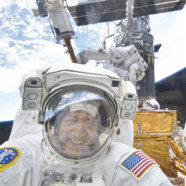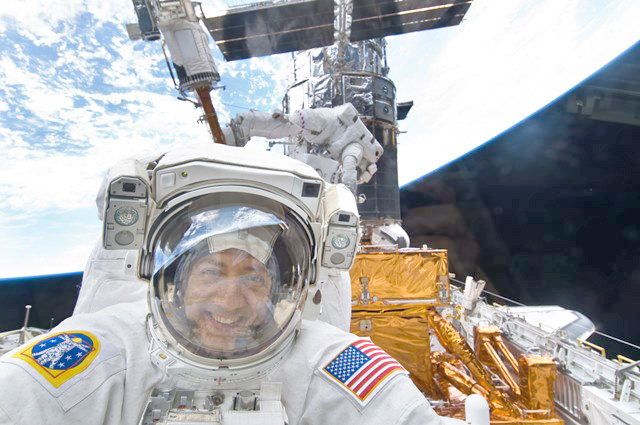Learn STEM from Astronaut
Astronaut-turned-professor Massimino leads new STEM student recruitment.
When mechanical engineering professor Michael Massimino was applying to colleges, he wanted more than just an education in engineering. Though he never planned to take classes in law, business, or journalism, he loved the idea of being surrounded by students who did.
Thirty years—and two trips to space—later, Massimino, SEAS ’84, is working with Columbia’s admissions office to attract science and engineering students to the University who think just like he thought.

Mechanical engineering professor and former astronaut Michael Massimino is part of a new outreach effort by the admissions office to recruit STEM students. (Credit: Avi Schwarzschild / Staff Photographer/Columbia Spectator)
“It’s good for the students who attend because they can learn about going to college. It’s good for Columbia. It’s good for the space program,” Massimino said. “It’s a win-win for everybody.”
The initiative started with an open master class that Massimino taught last May. Students and parents from around the city came in droves to hear Massimino’s Introduction to Human Space Flight lecture, which he taught as a visiting professor who had travelled to space twice with NASA.
Encouraged by the success of his first master class, Massimino began touring the country this fall speaking to high school students about space travel—and STEM opportunities at Columbia. He’s already been to San Francisco this semester, and he plans to visit Washington, D.C., Florida, and Seattle over the next few months.
During the stops, Massimino first talks about his experience with the space program and engineering. Admissions officers then speak about Columbia and the opportunities at the School of Engineering and Applied Science.
Right now, Massimino said the program is about encouraging students to apply. Come winter and spring, when early and regular decisions are released, he said the events will be more focused on convincing accepted students to commit to Columbia.
“It seemed like the admissions department had goals that aligned with mine, which were to get students of all ages excited about going to college, and—maybe if they’re so inclined—math and science are a good option,” Massimino said.
As a part of the effort to attract more STEM students to Columbia, the admissions office has unleashed a flurry of initiatives over the past few years, including organized tours of research labs, faculty presentations, student panels, and master classes like the one taught by Massimino.
Dean of Undergraduate Admissions Jessica Marinaccio said in an email that to “complement our event-based outreach efforts, we began offering specialized engineering tours in 2007 and science tours in 2008 to better serve students interested in those areas.”
In the spring, accepted students can also attend events like Columbia Engineering Days on Campus, the Egleston Scholars Experience, and the Columbia Science Scholars Experience. Next year, accepted students in Seattle will even have the opportunity to attend one of Massimino’s lectures in addition to other admissions events.
“Typically 10-15% of our visitors attend a science or engineering tour in addition to the general campus tour,” Marinaccio said. “Furthermore, prospective students interested in the STEM fields receive a host of targeted communications from our office, including letters and emails from science and engineering faculty, students and alumni, science and engineering viewbooks and information on research opportunities.”
The increased efforts, at least on the engineering front, seem to have paid off—over the past 10 years, the School of Engineering and Applied Science’s yield has increased by 9 percent. Columbia College’s yield rate only went up by 1 percent in the same period of time.
For intended biology major Anna Chubaeva, CC ’18, these efforts made a difference—she said that other liberal arts colleges she visited didn’t have information sessions or campus tours specific to STEM fields.
“Columbia was one of the only colleges that let me see a lab,” Chubaeva said. “It definitely influenced my decision to come here. ”
However, for students like Qirui Xu, SEAS ’15, the events, information sessions, and overnight visits are just fluff. When asked why he decided to come to Columbia, his response was a single word that no amount of persuasion from Massimino or Marinaccio can change: “Rank.”
Source: Kally Patz / Columbia Daily Spectator
============================
Very Inspiring Movie
Astronaut Michael Massimino’s Really Cool Job


